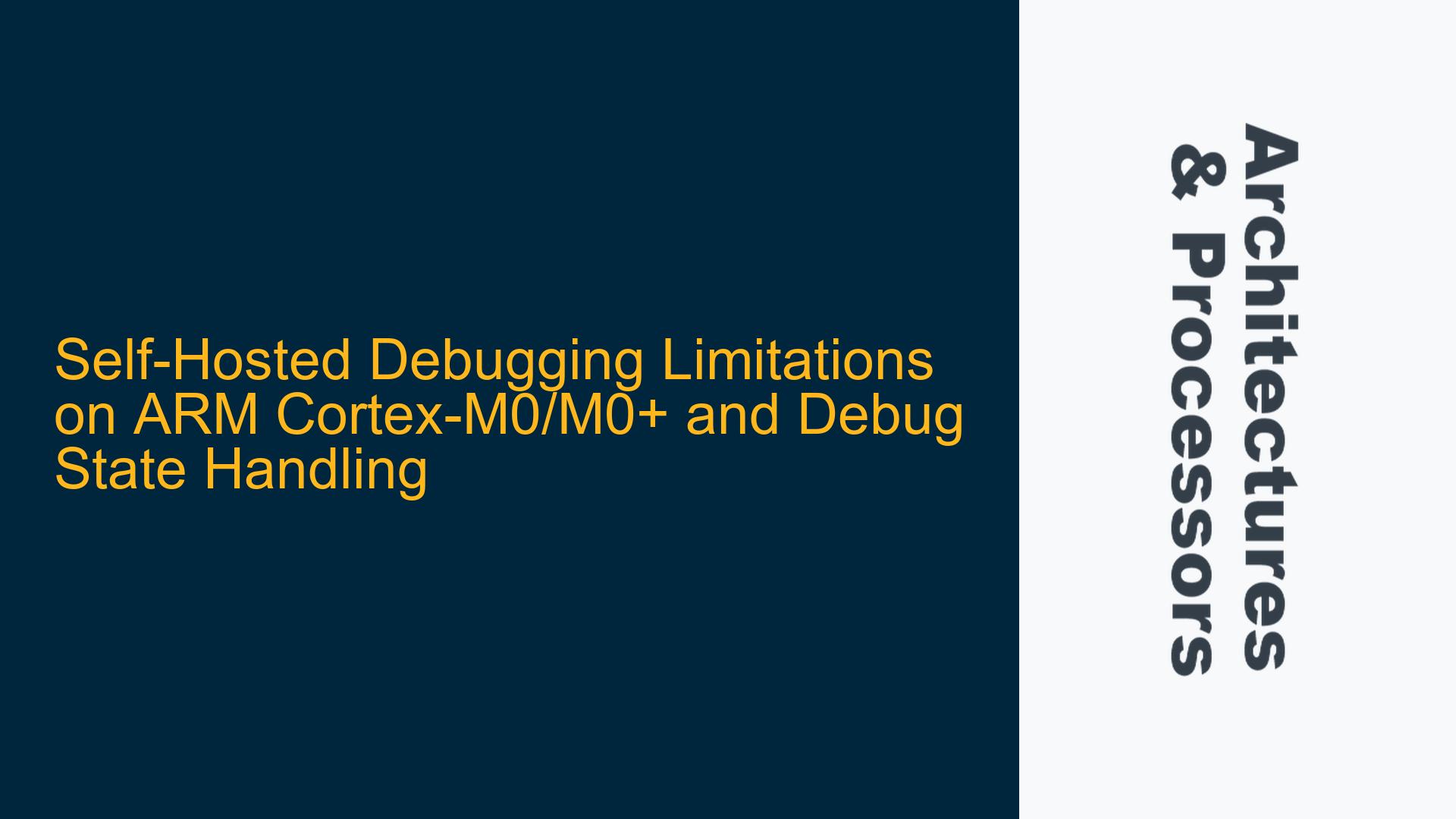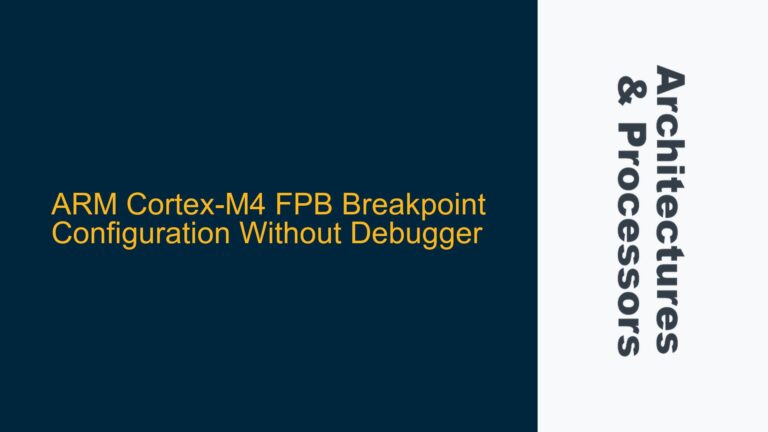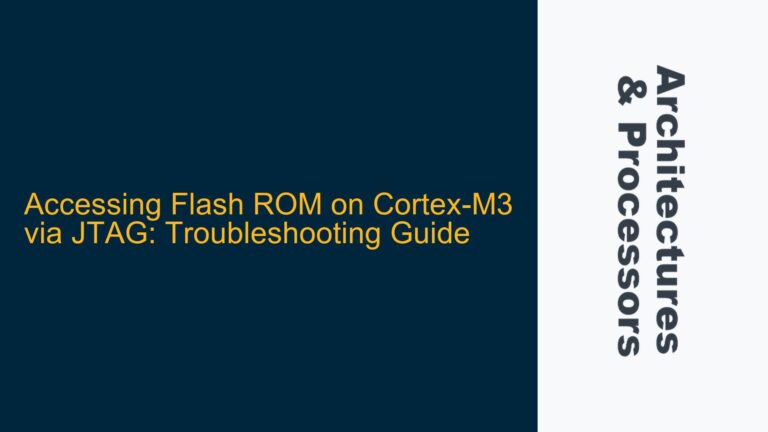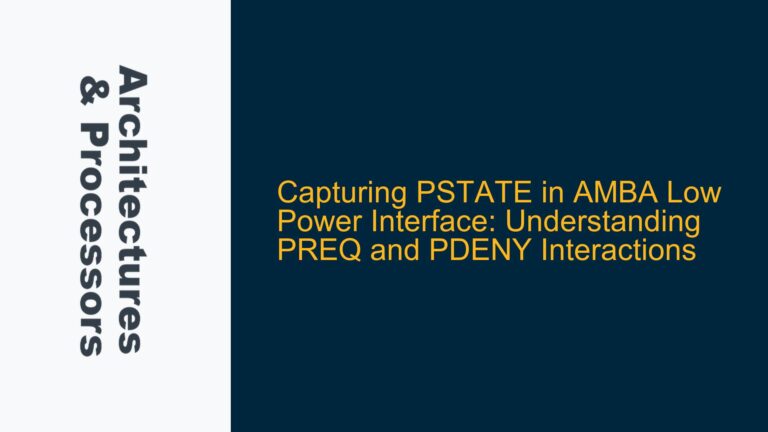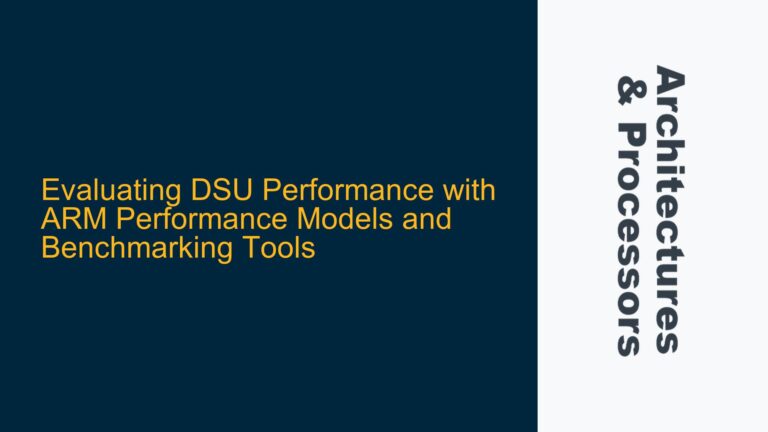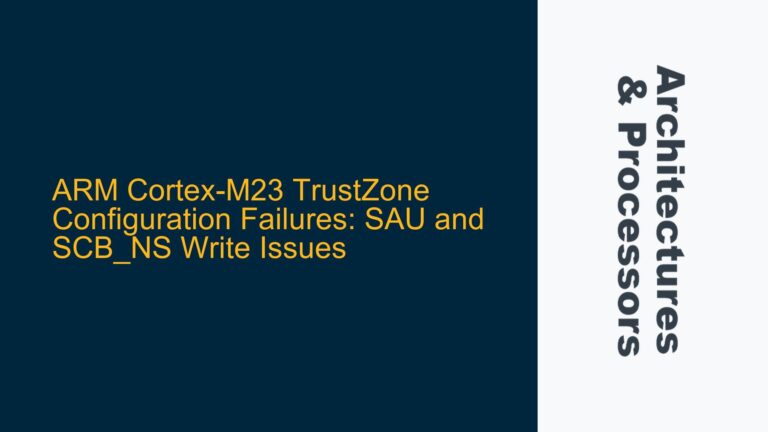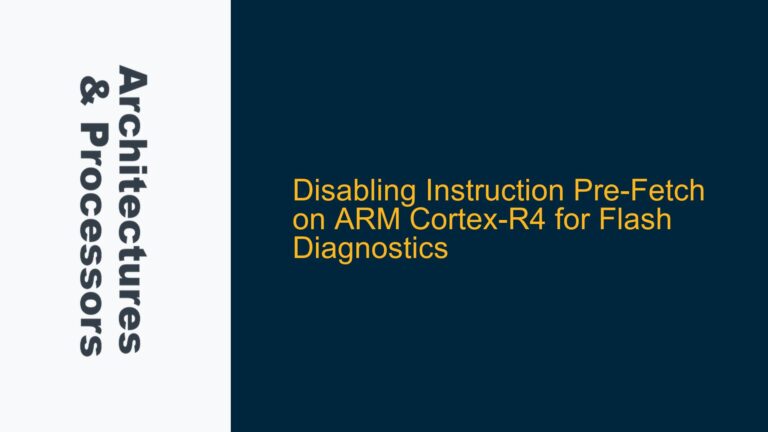ARM Cortex-M0/M0+ Debug State and Breakpoint Exception Challenges
The ARM Cortex-M0 and Cortex-M0+ processors, based on the ARMv6-M architecture, present unique challenges when it comes to self-hosted debugging, particularly in handling breakpoint exceptions without an external Debug Access Port (DAP). Unlike their ARMv7-M counterparts (Cortex-M3, M4, M7), which support a "debug monitor" state for software-based debugging, the ARMv6-M architecture lacks this feature. Instead, it relies on a "debug state" that is primarily designed for external debugging tools. This architectural difference has significant implications for developers attempting to implement self-hosted debugging solutions on these low-power, cost-sensitive microcontrollers.
In the ARMv6-M architecture, the debug state is tightly coupled with the DAP, and breakpoint exceptions (BKPT) are intended to be handled by external debuggers. When a BKPT instruction is executed without an attached DAP, the processor enters a hard fault state. Hard faults in ARM Cortex-M processors are typically non-recoverable because they do not save sufficient context for software-based analysis. This raises the question of whether it is possible to handle BKPT exceptions in software on ARMv6-M devices, given the limited context saved during a hard fault.
The BKPT unit in ARMv6-M does save some additional context, but accessing this information from software is not straightforward. The lack of a debug monitor state means that developers cannot rely on the same mechanisms used in ARMv7-M processors for self-hosted debugging. This limitation is particularly problematic for applications where external debugging tools are not available or practical, such as in field-deployed systems or resource-constrained environments.
Debug State Limitations and Hard Fault Context in ARMv6-M
The primary issue with self-hosted debugging on ARM Cortex-M0/M0+ processors stems from the architecture’s reliance on the debug state and the absence of a debug monitor state. The debug state is designed to work in conjunction with an external DAP, which is typically provided by a hardware debugger. When a BKPT instruction is executed, the processor expects the DAP to handle the exception. If no DAP is connected, the processor cannot transition to the debug state and instead generates a hard fault.
Hard faults in ARM Cortex-M processors are intended to handle severe errors, such as bus faults or undefined instructions. When a hard fault occurs, the processor saves a limited amount of context, including the program counter (PC), link register (LR), and program status register (PSR). However, this context is insufficient for detailed analysis of the fault, making it difficult to implement a software-based debugger that can recover from or handle breakpoint exceptions.
The BKPT unit in ARMv6-M does provide some additional context, such as the address of the BKPT instruction and the contents of certain registers. However, this information is not automatically accessible to software. To retrieve this context, developers would need to implement custom fault handlers that can interface with the BKPT unit and extract the necessary information. This process is complex and error-prone, and it may not provide the same level of functionality as the debug monitor state available in ARMv7-M processors.
Another challenge is the timing of cache invalidation and memory barriers when dealing with breakpoint exceptions. In ARMv7-M processors, the debug monitor state ensures that the processor’s state is consistent and that any cached data is invalidated before the debug handler is executed. In ARMv6-M, this consistency must be manually enforced by the developer, adding another layer of complexity to the implementation of self-hosted debugging.
Implementing Software-Based Breakpoint Handling on ARMv6-M
Despite the challenges, it is possible to implement a limited form of self-hosted debugging on ARM Cortex-M0/M0+ processors by leveraging custom fault handlers and careful management of the processor state. The following steps outline a potential approach to handling BKPT exceptions in software:
-
Custom Hard Fault Handler: Implement a custom hard fault handler that can distinguish between different types of hard faults. This handler should check the fault status registers to determine whether the fault was caused by a BKPT instruction. If the fault was caused by a BKPT instruction, the handler should extract the necessary context from the BKPT unit and save it for further analysis.
-
Context Extraction: The custom hard fault handler must interface with the BKPT unit to retrieve the address of the BKPT instruction and any other relevant context. This may involve reading specific memory-mapped registers or using special instructions to access the debug state. The extracted context should be stored in a secure location where it can be accessed by the debugging software.
-
Instruction Emulation: Once the context has been extracted, the debugging software must emulate the instruction that was replaced by the BKPT instruction. This requires decoding the original instruction, executing it in software, and updating the processor state accordingly. The emulated instruction should be executed in a controlled environment to ensure that it does not cause additional faults or side effects.
-
State Restoration: After the emulated instruction has been executed, the debugging software must restore the processor state to continue normal execution. This includes updating the program counter, link register, and any other registers that were modified during the emulation process. The processor should then resume execution from the instruction following the BKPT instruction.
-
Cache and Memory Barrier Management: To ensure consistency, the debugging software must manually invalidate any cached data and insert memory barriers as needed. This is particularly important when dealing with self-modifying code or when the BKPT instruction is located in a memory region that is subject to caching. Proper management of cache and memory barriers is essential to avoid race conditions and ensure that the processor state is consistent.
-
Debugging Interface: Finally, the debugging software should provide an interface for developers to interact with the self-hosted debugger. This interface should allow developers to set breakpoints, inspect the processor state, and step through code. The interface can be implemented using a serial connection, a custom protocol, or any other communication mechanism supported by the target hardware.
While this approach provides a workaround for the lack of a debug monitor state in ARMv6-M processors, it is important to note that it is not a perfect solution. The implementation is complex, and the performance overhead of emulating instructions and managing the processor state may be significant. Additionally, the limited context saved during a hard fault means that the debugging software may not be able to recover from all types of faults or provide the same level of detail as an external debugger.
In conclusion, self-hosted debugging on ARM Cortex-M0/M0+ processors is challenging due to the architecture’s reliance on the debug state and the absence of a debug monitor state. While it is possible to implement a limited form of software-based breakpoint handling using custom fault handlers and careful state management, this approach is complex and may not be suitable for all applications. Developers should carefully consider the trade-offs between the complexity of implementing self-hosted debugging and the benefits of using external debugging tools when working with ARMv6-M processors.
